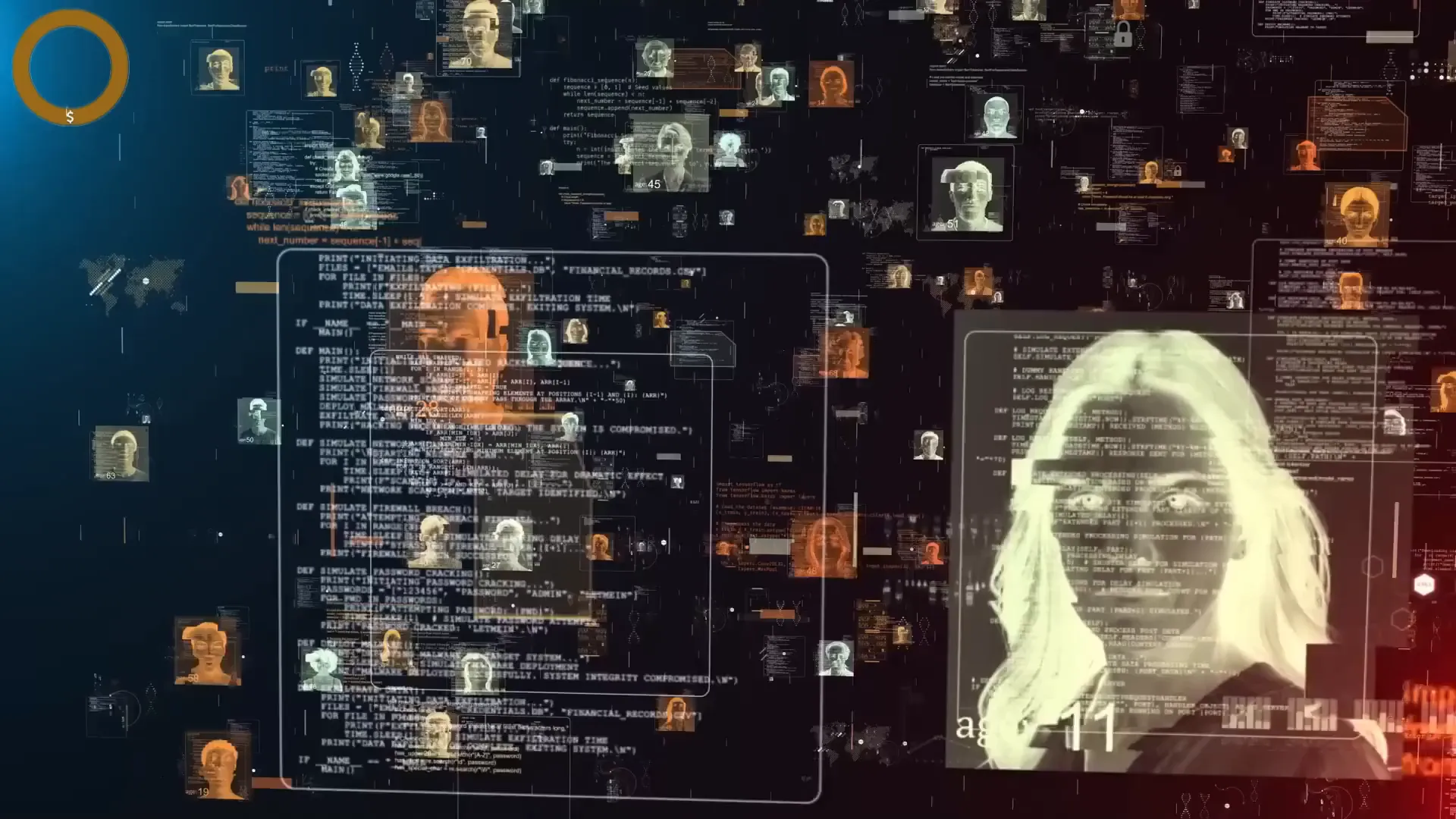
The future of finance is unfolding right before our eyes, and it’s far more unsettling than most people realize. In a revealing discussion featuring investigative journalist Whitney Webb, we dive deep into how central bank digital currencies (CBDCs), stablecoins, and tokenized deposits are quietly reshaping the global financial system. This transformation threatens financial privacy, strengthens traditional banking powers, and sets the stage for an unprecedented level of government and corporate surveillance.
If you’re invested in cryptocurrency, bitcoin, or simply concerned about your financial freedom, understanding these changes is crucial. Let’s unpack what’s happening, why it matters, and what it means for your future.

Table of Contents
- The Looming Financial Overhaul: Stablecoins, Tokenized Deposits, and Public-Private Partnerships
- Why Private Banks Will Play a Central Role in Digital Currency Systems
- CBDCs: The Gateway to a Financial Surveillance State
- Risk Management and Control: The Elite’s Perspective
- The Darker Reality: Surveillance, Wealth Gap, and Loss of Financial Freedom
The Looming Financial Overhaul: Stablecoins, Tokenized Deposits, and Public-Private Partnerships
The global financial system is on the brink of a radical overhaul. Key components like stablecoins, tokenized deposits, and public-private partnerships are already being established behind the scenes. But one major piece remains missing: a trigger event that will force the widespread adoption of this new financial order.
Whitney Webb warns that this trigger is likely to be a crisis, real or manufactured, that leaves people with little choice but to onboard onto CBDCs. The narrative pushed will be that financial privacy and anonymity are dangerous, especially in the fight against terrorism and money laundering. This crisis will serve as the justification to strip away privacy protections and usher in digital currencies tied to digital IDs, enabling governments and corporations to monitor every transaction and track your every move.

Why Private Banks Will Play a Central Role in Digital Currency Systems
You might wonder why private banks like JPMorgan and Citigroup are deeply involved in this transformation. The answer lies in control and risk management. If a private bank manages your digital money, it’s much easier for them to restrict access or “de-bank” you than if the Federal Reserve issued a direct CBDC. For example, JPMorgan has previously de-banked individuals without explanation, a level of control that would be harder to exercise if the government issued the currency directly.
This public-private partnership model is the prevailing system in the U.S., where the Federal Reserve works closely with private banks that effectively own it. The digital dollar will follow this pattern, combining public oversight with private sector influence, allowing both to tighten their grip on the financial system.
Using existing dollar-pegged stablecoins, which are already on blockchains, can fast-track this transformation without the years-long design and experimentation process a direct CBDC would require. Banks also issue tokenized deposits, a type of digital currency that JPMorgan claims is superior to CBDCs in some respects.
Meet R3 and Fluent Finance: The Architects of the New Digital Currency Landscape
One of the largest developers of CBDCs is a company called R3, backed by major Wall Street banks. They've been recognized as the CBDC Partner of the Year and are building digital currencies for countries worldwide. R3’s “digital currency accelerator” develops three types of digital currencies: CBDCs, stablecoins, and tokenized deposits.
Oliver Gale, who calls himself the founder of CBDCs, recently co-founded Fluent Finance, aiming to create a highly trustworthy, bank-backed stablecoin called US Plus. This coin is designed to address concerns around opaque reserves seen in coins like Tether, offering real-time trackable reserves. Gale’s move into stablecoins signals where the money and power are headed.
CBDCs: The Gateway to a Financial Surveillance State
Whitney Webb highlights that stablecoins and tokenized deposits are merely stepping stones to a darker future dominated by CBDCs. By keeping banks involved, governments avoid the backlash of fully nationalizing money while tightening their control. This mirrors historical crises where power centralizes under the guise of market competition and risk management.
Webb predicts an inevitable cyber crisis, whether real or manufactured, will be the catalyst. Central banks and financial giants will present CBDCs as the solution to the chaos, but the rollout of digital IDs will tie your financial and digital life into one vast surveillance network. The promise of financial inclusion will likely mask a consolidation of power, stripping away rights, privacy, and freedom of choice.
Risk Management and Control: The Elite’s Perspective
From the elite's viewpoint, this new system is the ultimate form of risk management. Larry Fink of BlackRock, a figure obsessed with risk, has openly stated that markets dislike democracy because it’s “messy” and prefer totalitarian governments due to their lower risk. This mindset underlines the push for tighter control over financial systems.
Even public figures like Elon Musk, often seen as champions of free speech, have business interests tied to government subsidies and policies aligned with globalist agendas. The consensus among financial giants is that another major crisis is imminent, and they want to avoid public backlash like the one after 2008. By blaming hackers for financial losses—a tactic enabled by intelligence agencies’ ability to frame cyberattacks—they can absolve themselves of responsibility.

The Darker Reality: Surveillance, Wealth Gap, and Loss of Financial Freedom
The United Nations itself has admitted that accelerating digital infrastructure adoption exacerbates wealth inequality, enriching billionaires even more. Despite this, these policies continue unabated, driven by those who design and control the technology. The average person has no say in the stakeholder capitalism model being imposed.
Meanwhile, Bitcoin’s recent bullish signals—such as a bullish engulfing pattern after 18 months and surging open interest—show growing optimism, but also potential volatility. Whitney Webb warns that this rise might just be the beginning of a transformation where financial freedom diminishes, replaced by systems controlled by powerful players.
The combination of CBDCs and digital IDs threatens to erode privacy and usher in an era of centralized surveillance and control. Technical indicators point to short-term corrections in crypto markets, but the bigger question remains: What kind of world will be built in the wake of these financial shifts?
What This Means for Cryptocurrency, Bitcoin, and Your Financial Future
- CBDCs and stablecoins will not replace banks but strengthen their control over your money.
- Financial privacy risks disappearing as digital IDs link your identity to every transaction.
- Cyber crises will be used as leverage to force mass adoption of digital currencies.
- The wealthy and powerful will benefit, while ordinary citizens face increasing surveillance and loss of autonomy.
- Bitcoin and decentralized finance face an uncertain future amid tightening institutional control.
The future of finance is not just about technology or convenience—it’s about power, control, and the very nature of freedom in a digital age. Staying informed and vigilant about these changes is essential.
What do you think? Will central bank digital currencies safeguard your financial privacy, or are they a gateway to greater control? Share your thoughts and join the conversation.
STAY ALERT: They Are Planning Complete FINANCIAL LOCKDOWN – What You Need to Know About Cryptocurrency, Bitcoin, and the Future of Money. There are any STAY ALERT: They Are Planning Complete FINANCIAL LOCKDOWN – What You Need to Know About Cryptocurrency, Bitcoin, and the Future of Money in here.
